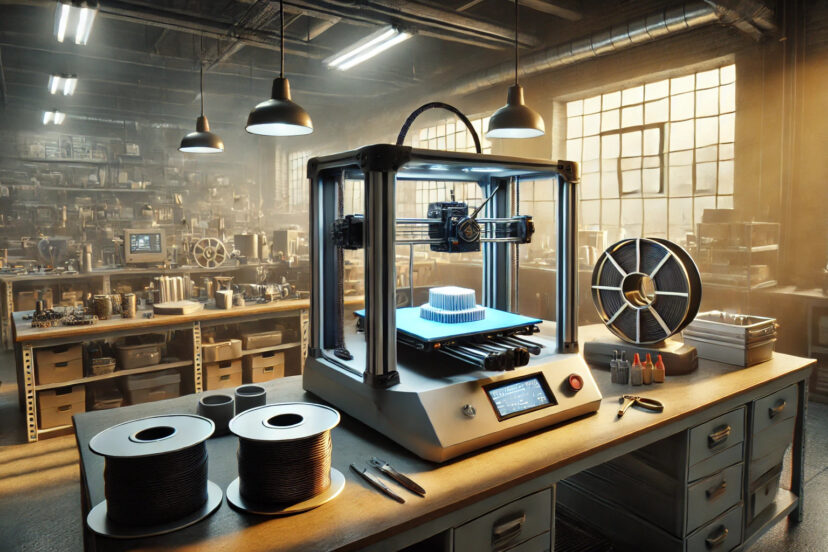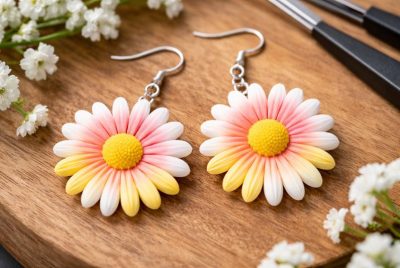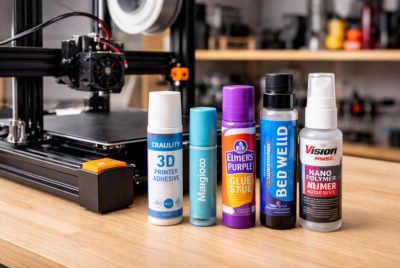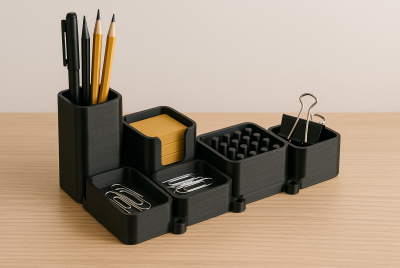3D Printer for Sale: Guide to Making the Right Choice
Are you on the hunt for the best 3D printer for sale? I got you covered! Finding the right 3D printer comes with many key factors like product quality, build volume, and price. With lots of options available online or even in-store, it’s easy to get overwhelmed. I know, cause I’ve been there too. So, let me help you make the right decision and get the best printer for your specific needs.
What exactly is a 3D printer?
I believe you already know what a 3D printer is since you’re already looking to buy one. But for those who are unsure what it is, let me make it clear to you. A 3d printer is a machine that lets you turn creative ideas into tangible things. How? By layering materials like plastic, resin, or metal to form an object from a digital blueprint. Imagine printing a superhero not just on paper but actually bringing that superhero to life. Impressive, right?
Scientific Research on 3D Printing
Recent advancements in polymer 3D printing have significantly impacted various industries, particularly in the medical field. This technology allows for the creation of complex, low-cost functional parts with customizable properties, enabling the development of personalized medical implants and safety equipment. Despite these innovations, challenges such as high costs and slower printing speeds persist. However, continued research into new materials and improved processes is pushing the boundaries of what 3D printing can achieve. You can explore more on this in the polymer 3D printing review and a comprehensive analysis of 3D printing advancements and challenges.

Types of 3D Printers: Which One is for You?
There are 3 types of 3D printers and understanding them is crucial in making the right decision. Here are the types of 3D printers you should know:
1. FDM (Fused Deposition Modeling) Printers
FDM printers are best for hobbyists like me. This printer uses thermoplastic filaments, melting and layering them to construct objects. Oh, and they’re also budget-friendly, perfect for those just starting out.
2. SLA (Stereolithography) Printers
Want higher precision? Okay, SLA is your go-to. They offer greater detail than FDM because they utilize UV light to harden the liquid resin. Sure, they can be a bit messier, but the stunning results? It’s worth the extra effort.
3. SLS (Selective Laser Sintering) Printers
Now if you’re ‘the pro’ of 3D printing, SLS is for you. SLS printers employ lasers to fuse tiny particles, often using nylon or other powders. They excel in industrial applications.
Budget: How Much Should You Spend?
Alright, let’s talk about the budget. How much do you need n order to buy a 3D printer? Well, it depends on your specific needs and aspirations. Here’s a quick overview:
– Entry-Level ($200-$500)
If you’re just starting in 3D prinitng, numerous affordable models will do the trick. Of course, they might lack all the fancy features, but they’re perfect for gaining experience.
– Mid-Range ($500-$1,500)
Been printing for a while? Great! You’ll discover higher quality, more features, and increased versatility—ideal for hobbyists ready to advance their skills.
– High-End ($1,500 and up)
At this tier, you’re investing in professional-grade machines. Higher precision most likely equals to higher price. Plus, it can create larger objects which are perfect for businesses and some industries.
Materials: What Can You Print With?
So, what kind of materials do you need for your project? Here’s what you need to fuel your imagination:
– PLA (Polylactic Acid)
PLA is perfect for beginners because it is easy to work with, eco-friendly, and available in a dazzling array of colors.
– ABS (Acrylonitrile Butadiene Styrene)
ABS is a bit sturdier than PLA. It’s better for functional parts but does require a heated print bed for optimal results.
– Resin
Used in SLA printers, resin enables the creation of intricately detailed objects, but it requires careful handling.
– Nylon and Metals
For high-end printers, you can even venture into nylon or metal powders. If you’re engaged in industrial projects, these materials provide strength and durability.
Top 3D Printer for Sale
- Popular for its reliability, ease of use, and active community support. Great for newcomers to 3D printing.
ANYCUBIC 3D Printer Kobra 2 Neo
- Comes semi-assembled, offering a solid build with a heated bed. Ideal for users looking for straightforward setup and use.
- Known for its reliability and high print quality. It includes automatic bed leveling and filament sensors.
FLASHFORGE Adventurer 5M Pro 3D Printer
- Dual extruder for printing with two filaments at once, offering more versatility. It’s great for those who want to explore more advanced printing.
ELEGOO Neptune 3 Pro FDM 3D Printer
- Known for its large build volume, dual extruder, and closed-frame design. Ideal for high-precision, industrial-grade projects.
Size Matters: What Build Volume Do You Need?
Does size really matter in choosing the right 3D printer? Yes, my friend. The build volume (essentially, the maximum size of the object it can create) varies from model to model. Think about what kind of projects are you planning to do. Crafting jewelry or miniatures? A compact build will suffice. But if you’re aiming to create functional parts or large prototypes, you’ll need a bigger printer with a large capacity. I’m a hobbyist who likes to create toys that’s why I bought a small 3D printer. It actually fits my desk setup!
Features to Look For in a 3D Printer
Let’s get down to the nitty-gritty—what features should you prioritize while browsing for a 3D printer for sale?
1. Print Speed
Print speed is important but keep in mind that faster isn’t always better. Sometimes, speed comes at the expense of quality. Finding the right balance is key, folks.
2. Precision
If you want to create intricate designs, choose a printer with high resolution. Resolution is actually measured in microns… A lower number means finer detail.
3. User Interface
Some printers boast touch screens, while others may have more complex software. I recommend you find a user-friendly interface if you’re a newbie. Believe it or not, can make all the difference in your experience.
4. Heated Bed
Alright, for materials like ABS, a heated bed is crucial. Why? Because helps your prints adhere to the platform and prevents warping as they cool.
5. Connectivity Options
A bonus feature to look for is the connectivity options. Some printers have wireless capabilities or USB connections for easier design transfers. Kick off prints from anywhere!
Where to Find the Best Deals
Where to snag a 3D printer for sale? Here are some options to consider:
– Online Retailers
From specialized 3D printing sites to major online marketplaces (like Amazon), you can explore a wealth of options without leaving your couch.
– Local Stores
Though less common, some tech shops and hobby stores carry 3D printers. This lets you see the machine up close before making a decision.
– Second-Hand Market
Not enough budget? No problem! Many hobbyists upgrade frequently, leaving quality printers available at a fraction of the original cost. Join Facebook groups and forums, maybe you’ll find a good one for sale.
3D Printing Community: Where to Get Help
Feeling overwhelmed? You’re not alone! It’s easy to feel that way when you’re a newbie. But hey, there’s a community out there willing to help you start this journey. Whether it’s forums, online groups, or local maker spaces, you can find people eager to help you troubleshoot problems or share tips for improving your prints. After all, we all started from scratch, right?
Conclusion
Finding the right 3D printer depends on your specific needs. Understanding the differences between 3D printers and the materials used can actually help you make an informed choice. There’s always a 3D printer for every need and level of experience. If you need help, you can join online forums too. So, grab a 3D printer for sale and unleash your creativity!
FAQs
1. Can I use any filament with my 3D printer?
Unfortunately, not all filaments are suitable with every printer. Check your printer’s specifications and make sure they’re compatible.
2. How long will it take to 3D print a design?
It really depends on the size and complexity of the model. Some prints can take a few hours but larger prints may take up to days to finish.
3. Do I need any special skills to use a 3D printer?
Not really, but we can’t deny the fact that it has a learning curve. Don’t worry, with a bit of patience, anyone can learn the ropes.
4. Can 3D printers print in metal?
Yes, but only specialized (and often pricey) printers can tackle metal. Most hobbyist models stick to plastic filaments like PLA or ABS.
5. Is 3D printing expensive?
Yeah, but only the initial investment which is your 3D printer. But hey, this tech is a worthwhile investment!




